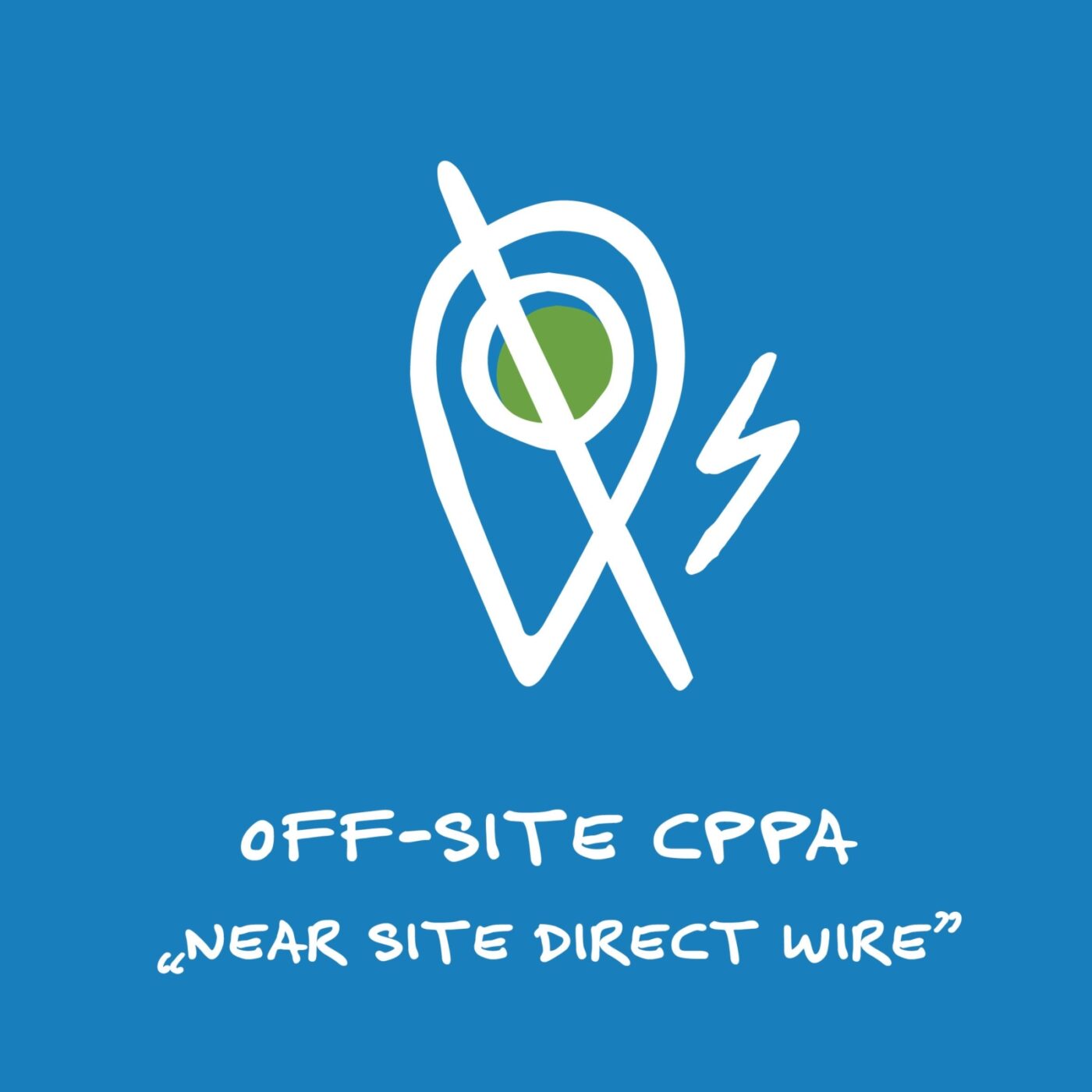We have established partnerships with numerous energy companies and have created a thriving company structure based on the experience of our management, the knowledge of our advisors and the skills of our specialists. We keep abreast of new developments in a very dynamic market to be able to offer entrepreneurs the best energy solutions to optimise their energy purchase costs. As part of our energy support, we offer servicing of concluded agreements. One of our specialities has become corporate CPPAs, which in Poland are a novelty with very high potential.
Why choose a CPPA with PowerOn?
PowerOn guarantees:
- a free consultation,
- an analysis of the legal situation and your company’s energy needs,
- assistance in concluding a favourable CPPA,
- customer support in optimising electricity costs,
- to guide you through all the formalities,
- energy consultancy.
Ask about the CPPA you are interested in
From a practical point of view, in the case of a cPPA for a source directly connected to the consumer’s installation (a so-called on-site cPPA), the question of balancing the energy given up from the source and taken from the grid seems obvious.

In the case of a cPPA for a virtual source, i.e. one that is not connected to the consumer’s installation (a so-called off-site cPPA), the issue of balancing energy is no longer so obvious for the end consumer. Thus, more of a contract for difference comes into play, where the payer to the developer of e.g. an offshore wind farm is not the Settlement Administrator (the Polish state), but a private entity.

As a type of off-site cPPA, it is worth mentioning the ‘near site direct wire’. In this type of agreement, the supply of electrical energy takes place via a dedicated cable line between the Developer’s installation and the Consumer. In the case of billing, the situation is no longer so clear-cut, as the ERO is currently demanding the appearance of another DSO (Developer).

Main advantages of a CPPA:
- Reduction of electricity purchase costs,
- Independence from fluctuations in market energy prices,
- Precise budget planning,
- Building a pro-environmental brand image through the use of green energy,
- A real reduction in harmful carbon dioxide emissions into the atmosphere and contribution to the fight against climate change,
- Gaining a competitive advantage.
FREQUENTLY ASKED QUESTIONS
What is a CPPA?
A CPPA (Corporate Power Purchase Agreement) is an agreement for the sale of energy that is concluded directly between a power generator and a consumer. In this agreement, the trading company is omitted, which translates into financial benefits and greater independence.
In Poland, CPPAs are concluded in two main models:
- physical,
- financial.
Physical CPPAs
A CPPA in the physical model (sleevedCPPA) allows for the actual sale of electricity (produced from renewable sources) to the ultimate consumer. The electricity grid operator is essential in executing the contract in this model. The generator sells a specific amount of generated electricity to the consumer at a price that is fixed in the agreement. The consumer physically uses the purchased energy.
CPPA in the financial model, what does it look like?
A CPPA in the financial model (Virtual PPA, VPPA) does not involve the physical sale of the generated electricity. The generator then makes no real delivery of green energy to the consumer. The agreement involves a contract for difference. The parties signing the VPPA agree on a fixed electricity price. They buy and sell the energy on the market themselves – by entering into other agreements with third parties.
At the same time, a financial-type CPPA obliges the parties to settle the differences between the price they have set therein and the wholesale energy price currently prevailing on the market (the so-called spot price). When the market price for the volume of energy is higher than that stated in the VPPA, the green energy producer must pay the difference to the consumer. When, on the other hand, the market price is lower than that agreed in the agreement, the consumer must make up the difference to the generator.
A financial-type corporate CPPA in practice allows companies to be independent of large market fluctuations in electricity prices.
What is a Virtual PPA?
The definition of a VPPA appeared in the Financial Instruments Trading Act of 29.07.2005. According to the legal provisions, it is understood in Poland as a ‘contract for difference’. For this reason, corporations wishing to take advantage of the possibility to sign this type of agreement must make sure that their company’s financial policy allows them to conclude this type of agreement.
Does a company need a brokerage licence to sign a VPPA?
It would be most convenient if the parties signing a CPPA in the financial model were not obliged to obtain a brokerage licence. It is worth noting that the Law of 29.07.2005 obliges traders wishing to trade in financial instruments to obtain such a permit.
VPPAs could, however, be exempted from this regulation on the basis of the so-called self-employment exemption. A provision is found exempting traders who buy or sell financial instruments other than commodity derivatives for their own account from the brokerage authorisation requirement. The definition of a commodity derivative can be found in MiFID II / MiFIR (Markets in Financial Instruments Directive / Regulation), which defines the trading of financial instruments, the supervision of activities and investment services within the EU (the package regulates financial and commodity markets and their participants). The definition of a commodity derivative is contained in Article 2 section 1 point 30 of the MiFIR Regulation and clearly indicates that a contract for difference is not included in this group.
What does PowerOn offer?
PowerOn specialists will help your company conclude a profitable (and EU-compliant) CPPA. Our knowledge of the energy market, our many years of experience in the sector and our cooperation with energy companies have enabled us to develop procedures to support our customers in optimising their electricity costs. We help you choose environmentally friendly and low-cost green energy for your business.
We analyse the legal situation and your company’s energy needs, prepare detailed plans and help you choose the best generators. We then prepare CPPAs in the most favourable model for the corporation – we handle sleevedCPP and VPPA. We will take care of negotiating the best fixed prices for a differential contract or physical energy supply agreement. We will verify the text of the agreement presented by the other party against the applicable regulations and formal requirements. We can also take care of the concluded CPPAs – we will draw up the necessary applications, reports and statements, check the compliance of the settlements with the agreement and deal with possible complaint proceedings.
On-site CPPA – step by step
From a practical point of view, in the case of a cPPA for a source directly connected to the consumer’s installation (the so-called on-site cPPA), the question of balancing the energy given up from the source and taken from the grid seems obvious:
1) The cPPA developer
Receives from the end consumer: Price (agreed with the end consumer) x Energy Consumption (amount of energy returned to the grid).
2) End recipient
Charges for energy with:
– Trading company: Price (agreed with the trading company) x Energy consumption (amount of energy taken from the grid). In case of overproduction, price agreed with the trading company.
– Distribution company (DSO): Price (tariff) x Energy consumption (amount of energy taken from the grid).
– The cPPA developer: in accordance with the points above regarding the cPPA developer.
3) Trading company
– Receives from the final recipient: Price (agreed with the consumer) x Energy Consumption (amount of energy taken from the grid).
In case of overproduction, price agreed with the consumer.
4) Distribution company (DSO)
– Receives from the final recipient: Price (tariff) x Energy consumption (amount of energy taken from the grid).
Off-site cPPA – step by step
In the case of a cPPA for a virtual source, i.e. one that is not connected to the consumer’s installation (the so-called off-site cPPA), the issue of balancing energy is no longer so obvious for the end consumer. Thus, more of a contract for difference comes into play, where the payer to the developer of e.g. an offshore wind farm is not the Settlement Administrator (the Polish state), but a private entity.
1) The cPPA developer
– Receives a receivable from the consumer for the sale of all energy produced to the grid in relation to the currently occurring price on the market (Polish Power Exchange).
– When the market price is higher than the price agreed with the consumer, the Developer pays the end-consumer the difference to the base price agreed between them.
– When the price on the market is lower than the price agreed with the Final Consumer, the Final Consumer pays the Developer the difference to the base price agreed between them.
2) End Customer
Charges for energy with:
– Trading company: Price (agreed with the trading company) x Energy consumption (amount of energy taken from the grid)
– Distribution company (DSO): Price (tariff) x Energy consumption (amount of energy taken from the grid).
– cPPA Developer: As previously mentioned.
3) Trading company
– Receives from the final recipient: Price (agreed with the consumer) x Energy Consumption (amount of energy taken from the grid).
4) Distribution company (DSO)
– Receives from the final recipient: Price (tariff) x Energy consumption (amount of energy taken from the grid).
Off-site cPPA, so-called ‘near site direct wire’ – step by step
As a type of off-site cPPa agreement, it is worth mentioning ‘Near site direct wire’. In this type of agreement, the supply of electricity takes place via a dedicated cable line between the Developer’s installation and the Consumer. In the case of billing, the situation is no longer so clear-cut, as the ERO is currently demanding the appearance of another DSO (Developer).
1)The cPPA developer
– Receives from the final recipient: Price (agreed with the end consumer) x Energy Consumption (amount of energy returned to the grid).
The cPPA developer (DSO)
– Receives from the final recipient:
Price (tariff) x Energy consumption (amount of energy taken from the Developer’s DSO grid).
2) End Customer
Charges for energy with:
– Trading company: Price (agreed with the trading company) x Energy consumption (amount of energy taken from the grid). In case of overproduction, price agreed with the trading company.
– Distribution company (DSO): Price (tariff) x Energy consumption (amount of energy taken from the grid).
– cPPA Developer: Price (agreed with the cPPA Developer)
x Energy consumption (amount of energy fed back into the grid).
– cPPA Developer (DSO): Price (Developer’s DSO tariff) x Energy consumption (amount of energy taken from Developer’s DSO).
3) Trading company
– Receives from the final recipient: Price (agreed with the consumer) x Energy Consumption (amount of energy taken from the grid).
In case of overproduction, price agreed with the consumer.
